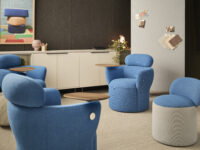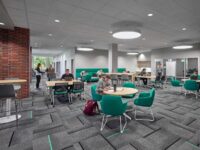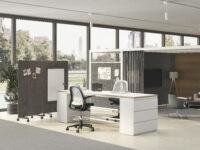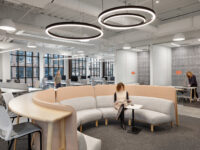As humans, we take in the world around us whether we realize it or not. The way certain surroundings make us feel is what interior office design professionals must always keep top of mind as they create unique, yet effective layout plans. In our experience, understanding how working environments can empower employees is the ultimate success indicator.
But this is just the tip of the iceberg when it comes to sustainability and how office layout planning can harmonize the discombobulated workforce trying to navigate new norms.
Business As Usual In A Post-Pandemic World
In addition to environmental challenges, we constantly face the fallout of a pandemic.
Does the space meet sustainability mandates and requirements set in place by law? Does the design reflect the shift in priority felt from people making their way back into office spaces?
Pre-pandemic, design was moving toward the open concept office. The high-walled workstation of the past few decades felt archaic compared to open collaboration spaces, touchdown areas, and conference rooms. This evolution was stymied by the pandemic-era social distancing mandates causing the reintroduction of the closed, personal space. As the pandemic made gathering not feasible, businesses had to adapt. Think plastic dividers, PPE, and other hasty decisions as the world shifted into a new chapter. Once people left the office, the world changed as we knew it. The dust from this shift catalyzed a plethora of office space planning and design opportunities. From standard shipping and receiving processes to customer services and daily operations, adapting to the new norms was no longer optional, but necessary for businesses to survive.
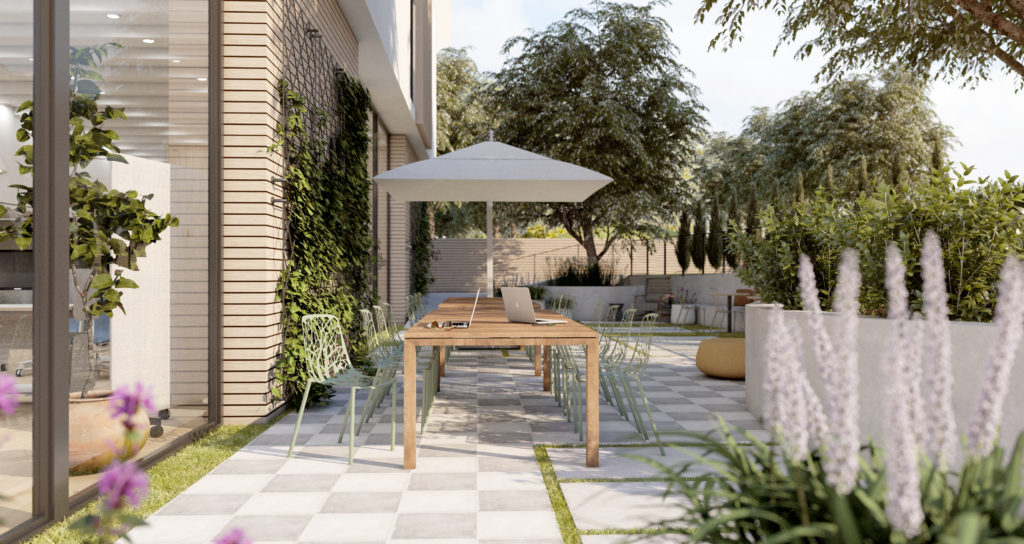
Designing A Better Workplace For People & The Earth
With the days of traditional 9-5 life behind us, priorities shifted in terms of what was truly necessity vs. luxury in Western Civilization. During the peak of the pandemic, when it felt like daily lives completely paused, nature began to heal. Greenhouse emissions lowered by 4.6%, alone. This requires business leaders to take a step back and think about how we can use new design concepts and best practices to reduce negative environmental impact.
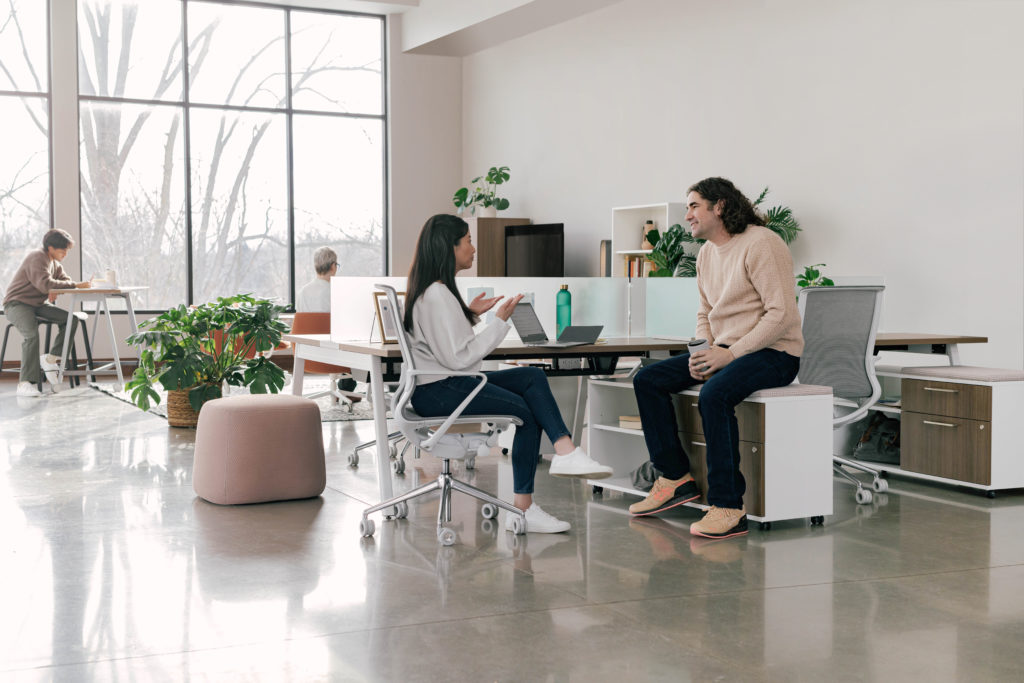
Let There Be (Natural) Light
Utilizing space to maximize natural light will improve how inviting a working environment is and may even provide some of the organic warmth that stimulates workers throughout the day. The incorporation of biophilic workspaces as a standard procedure connects us with nature.
As a result, the creative process thrives.
With sustainability and the environment being the driver of most modern office design concepts, it is critical to also partner with manufacturers practicing zero-waste procedures. This will only further the concept of sustainability in a working environment.
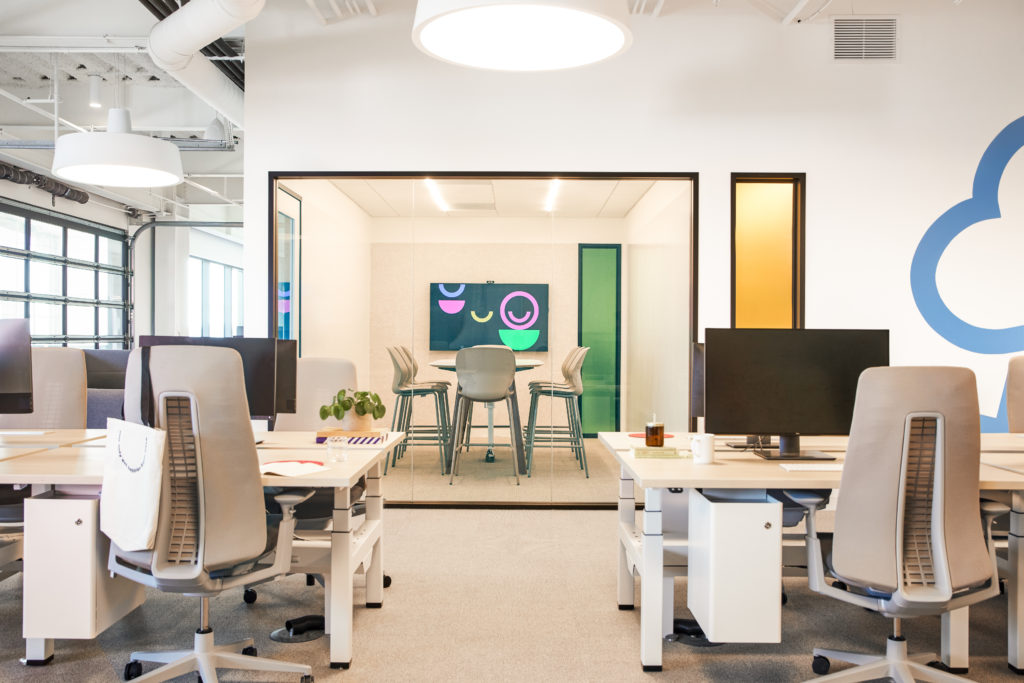
Furnish Your Office With Sustainable Products
Once a space has been designed to incorporate prioritized functions like dual purpose spaces, and a residential feel with lots of natural light, the next step is filling it with products that also support this way of thinking. Manufacturers that practice zero waste look at what makes something fully functional and will stand the test of time all the while being reduced, reused or recycled materials.
In short: sustainable commercial grade products can still provide a fully aesthetic appearance and be ethically sourced.
A Sustainable Future In The Workplace Starts Now
Our feelings about our work environments are greatly influenced by the way our offices are designed. What will lead us to standardizing sustainability is how we use this information to create workspaces and design them for dual purposes. As a whole, Western Civilization will continue to move in that direction by applying the lessons we’ve learned from the past and leveraging innovation for the future.
For additional inspiration on how you can add sustainability to your office, stop into our Columbus headquarters, which has a live green wall for all to enjoy.
